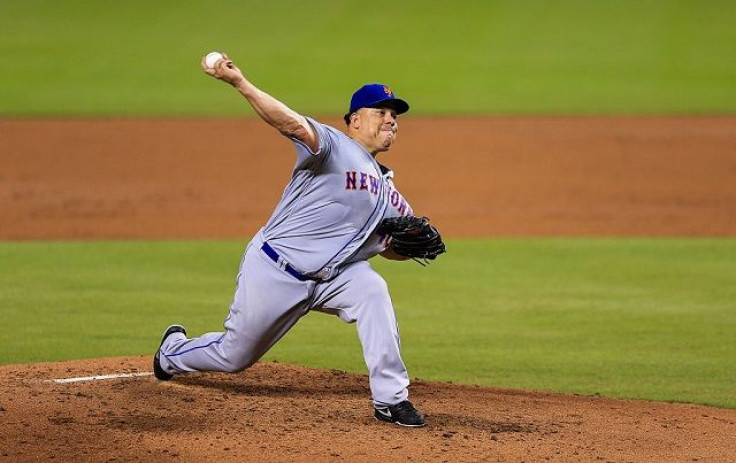Major League Baseball Players' Weight Problem: America’s Obesity Pastime Worsens In The Last 25 Years

Looks like it's not just us average Joes — even America’s professional baseball players have gotten heavier in the last few decades.
Researchers from Penn State and Northwestern University analyzed the height and weight of Major League Baseball (MLB) players over the last 145 years. For most of that time, the average weight and height of a player had stayed relatively steady, but that began to change in the early 1990s, the researchers found. After accounting for age, they found that the average MLB player who made his debut this current decade is much more likely to be overweight or obese than the players of old. More specifically, while 60 percent of the earlier generation’s debuting MLB players had a normal body mass index (BMI), only 20 percent of players today do. Seventy percent and 10 percent of these modern day players would be considered overweight and obese, respectively.
The findings were published late last September in Obesity Research and Clinical Practice.
"These trends warrant further attention because of the potential for adverse long-term health consequences in this population and those who perceive them as role models for health and human performance," the researchers concluded.
To be clear, there's likely more going on here than today's baseball players simply spending more time at the hotel buffet.
"The data are observational, and raise more questions than they answer," said the study's lead author Dr. David Conroy, professor of kinesiology at Penn State, in a statement. "BMI can be misleading, because it doesn't take body composition into account. What kind of pounds are the players adding? Are they mostly muscle or fat?"
Indeed, the timeline of increasing BMIs lines up well with MLB’s infamous “steroid era.” That time period, which first began in the 1990s and ran into the early 2000s, saw hitters and pitchers of all varying talent levels regularly take performance-enhancing drugs that increased their power, longevity, and body mass — a drastic change best exemplified by the growing hat size of all-time home run champ and now-ostracized San Francisco Giants star Barry Bonds. According to Conroy, though, changes in nutritional and training programs may also account for the beefier frames. In either case, it's likely that at least some of the added pounds are intentional.
“Research exists that shows how having extra weight can help with certain aspects of baseball," Conroy explained. "The more force a batter can put into the ball, the further it will travel."
Still, perhaps more than any other professional sport, Major League Baseball has always had its fair and celebrated share of heftier players — from the Great Bambino Babe Ruth to the New York Mets’ starting pitcher Bartolo “Big Sexy” Colón. Given that Colón is currently MLB’s oldest active player at age 43, it’s tough to think that the extra weight has stopped him down any.
Source: Conroy D, Carnethon M. Overweight and obesity among Major League Baseball players, 1871-2015. Obesity Research and Clinical Practice. 2016.



























